The last week of May 2008 I had the opportunity to fulfill a dream of every spaceflight enthusiast – that of visiting the “roots of spaceflight” in Russia, i.e. the factory where the first Sputnik, the first moon probe and the first manned spacecraft were built under the leadership of the famous chief designer Sergei Korolev, the cosmonaut training center and the mission control center for manned Russian spacecraft (TsUP). I and another space enthusiast, Bob Christy of Lincoln, U.K., traveled to Moscow at the invitation of Vladimir Agapov, a space debris specialist at the Keldysh Institute of Applied Mathematics of the Russian Academy of Sciences. His friends at Russian space journal Novosti Kosmonavtiki also took care of us!
A short description of
these visits can be found here.
Here I have gathered some
pictures from the Energia Museum and the Kaluga Museum (when so noted) of
small details in the museums - perhaps things that the avergae visitor
would not notice. You may notice the emphasis on radio systems.
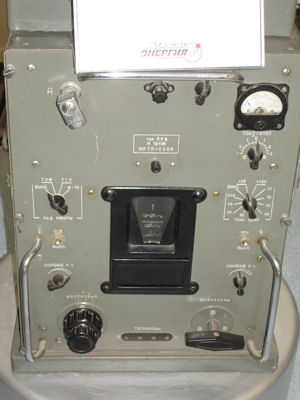
Radio receiver purportedly for picking up Sputnik. It is the Soviet
"Melnik" R-673 marine shortwave receiver covering 12-25000 kHz
and made by the Petropavlovsk Radio Works.
Click on the picture to
see a larger version.
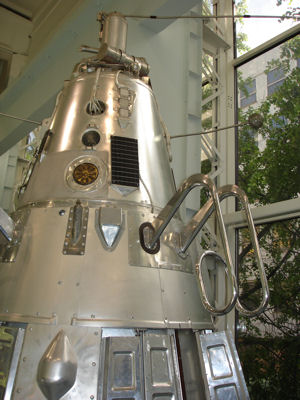
Sputnik-3, Tral antenna with one end grounded
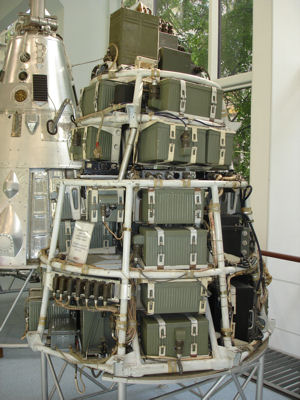
Sputnik-3 instrumentation mounted on welded frame.
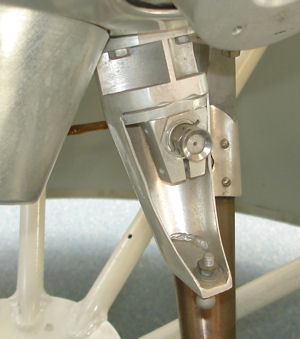
Luna-3 cold gas thruster
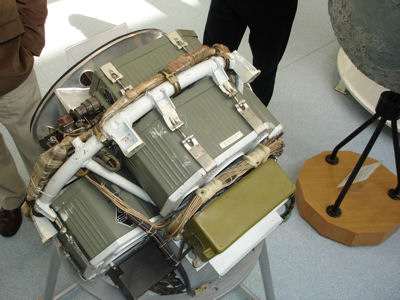
An exhibit labeled "Luna-3 instrumentation unit". But,
as noted by
Don Mitchell it is probabaly mislabeled and should be from
Luna-2.
Note that the electronics
boxes look very
similar to those in
Sputnik-3.
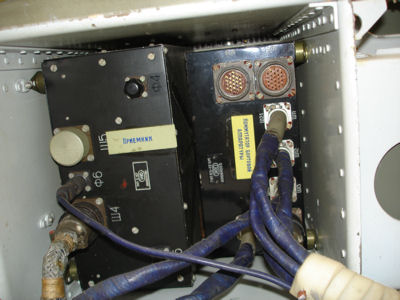
Equipment inside the instrument unit. Click on the picture to
see a larger version.
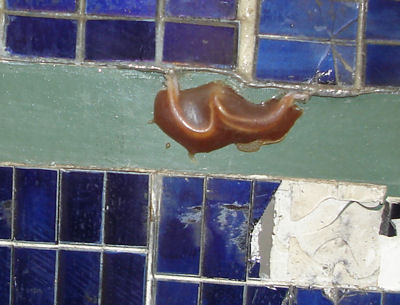
Molniya-1 solar array detail
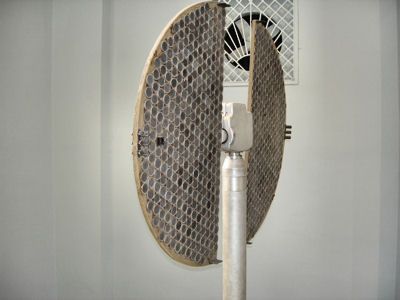
Articulated solar array on Korabl-Sputnik1, a.k.a. Sputnik-4
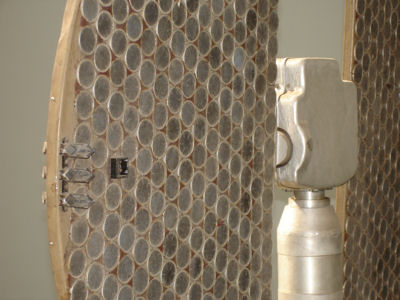
The solar array had circular solar cells.
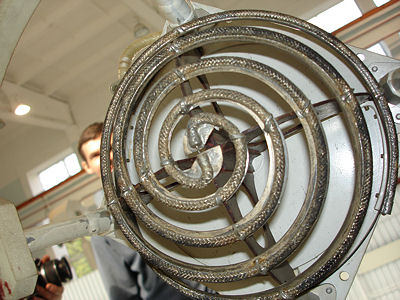
Spiral antenna on Venera.
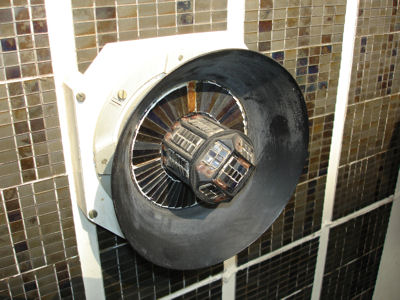
Sun sensor on Venera.
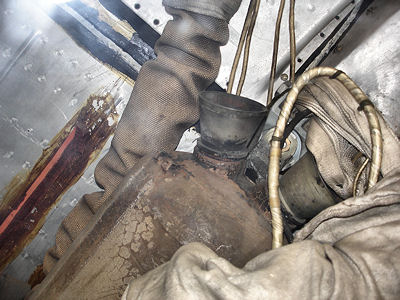
Solid retro rocket in Voskhod-2 parachute harness.
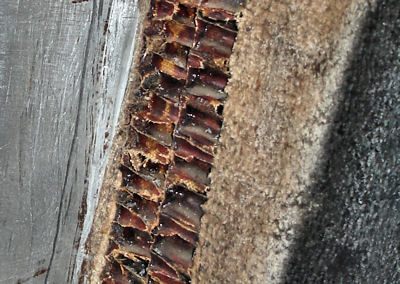
Cross section of Vostok heat shield. Aluminium shell of the spacecraft
on the left, then honeycomb, followed by the heat shield material. The
charred surface of the capsule on the right.
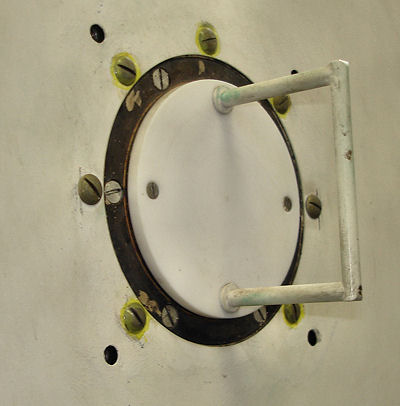
Antenna for 922 MHz on Soyuz orbital module .
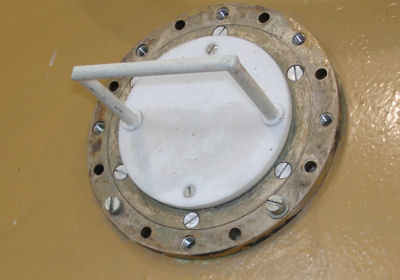
Antenna for 922 MHz on Mir base block. I had never foun this before .
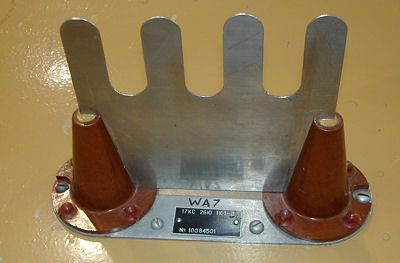
"Ramparts" antenna for 600-650 MHz on Mir.
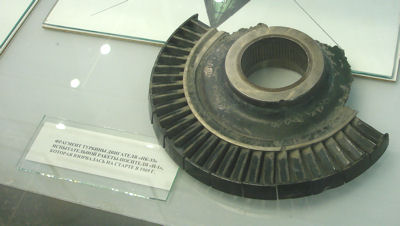
Turbine fragment from N-1 rocket in Kaluga Museum.
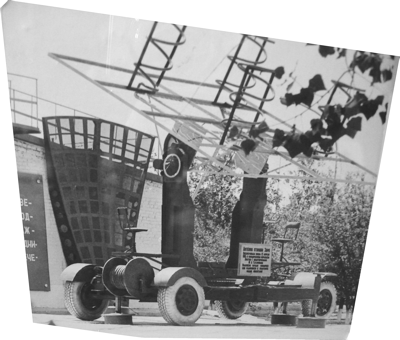
Ground station antenna for Vostok voice on 143.625 MHz.
(Kaluga Museum)
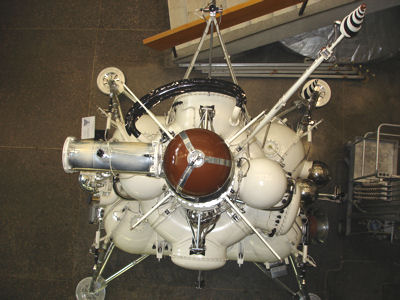
Top view of Luna-16 (Kaluga Museum)